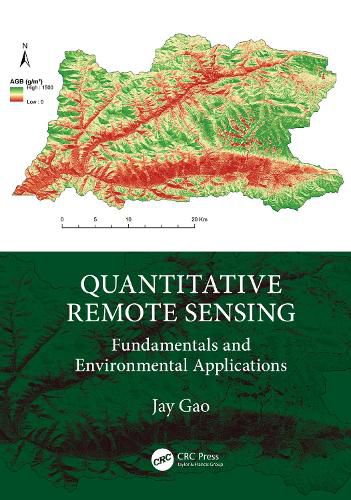Readings Newsletter
Become a Readings Member to make your shopping experience even easier.
Sign in or sign up for free!
You’re not far away from qualifying for FREE standard shipping within Australia
You’ve qualified for FREE standard shipping within Australia
The cart is loading…






This book provides comprehensive and in-depth explanations of all topics related to quantitative remote sensing and its applications in terrestrial, biospheric, hydrospheric, and atmospheric studies. It elucidates how to retrieve quantitative information on a wide range of environmental parameters from various remote sensing data at the highest accuracy possible and expounds how different aspects of the target of remote sensing can be quantified using diverse analytical methods and level of accuracy. Written in an easy-to-follow language, logically organized, and with step-by-step examples, the book assists readers to deepen their understanding of the theory and cutting-edge research on quantitative remote sensing.
Features
Explains how to retrieve quantitative information on a wide range of environmental parameters from various tailored remote sensing data at the highest accuracy possible. Manifests the author's decades of teaching and research in quantitative remote sensing and approaches the subject from both theoretical and pragmatic perspectives, informed by the latest research outcomes. Includes practical and real-life examples to illustrate how the quantitative information on a target can be retrieved from a given type of remote sensing data. Focuses on the latest developments in the field of quantitative remote sensing. Introduces sufficient mathematical concepts to reveal how remotely sensed data are converted to quantitative information while providing quality assurance of the retrieved results.
This is a suitable textbook for upper-level undergraduate or postgraduate students and serves as a handy and valuable reference for professionals working in monitoring the environment. By reading this book, readers gain a sound understanding of how to retrieve quantitative information on the environment from diverse remote sensing data using the most appropriate cutting-edge methods and software.
$9.00 standard shipping within Australia
FREE standard shipping within Australia for orders over $100.00
Express & International shipping calculated at checkout
This book provides comprehensive and in-depth explanations of all topics related to quantitative remote sensing and its applications in terrestrial, biospheric, hydrospheric, and atmospheric studies. It elucidates how to retrieve quantitative information on a wide range of environmental parameters from various remote sensing data at the highest accuracy possible and expounds how different aspects of the target of remote sensing can be quantified using diverse analytical methods and level of accuracy. Written in an easy-to-follow language, logically organized, and with step-by-step examples, the book assists readers to deepen their understanding of the theory and cutting-edge research on quantitative remote sensing.
Features
Explains how to retrieve quantitative information on a wide range of environmental parameters from various tailored remote sensing data at the highest accuracy possible. Manifests the author's decades of teaching and research in quantitative remote sensing and approaches the subject from both theoretical and pragmatic perspectives, informed by the latest research outcomes. Includes practical and real-life examples to illustrate how the quantitative information on a target can be retrieved from a given type of remote sensing data. Focuses on the latest developments in the field of quantitative remote sensing. Introduces sufficient mathematical concepts to reveal how remotely sensed data are converted to quantitative information while providing quality assurance of the retrieved results.
This is a suitable textbook for upper-level undergraduate or postgraduate students and serves as a handy and valuable reference for professionals working in monitoring the environment. By reading this book, readers gain a sound understanding of how to retrieve quantitative information on the environment from diverse remote sensing data using the most appropriate cutting-edge methods and software.